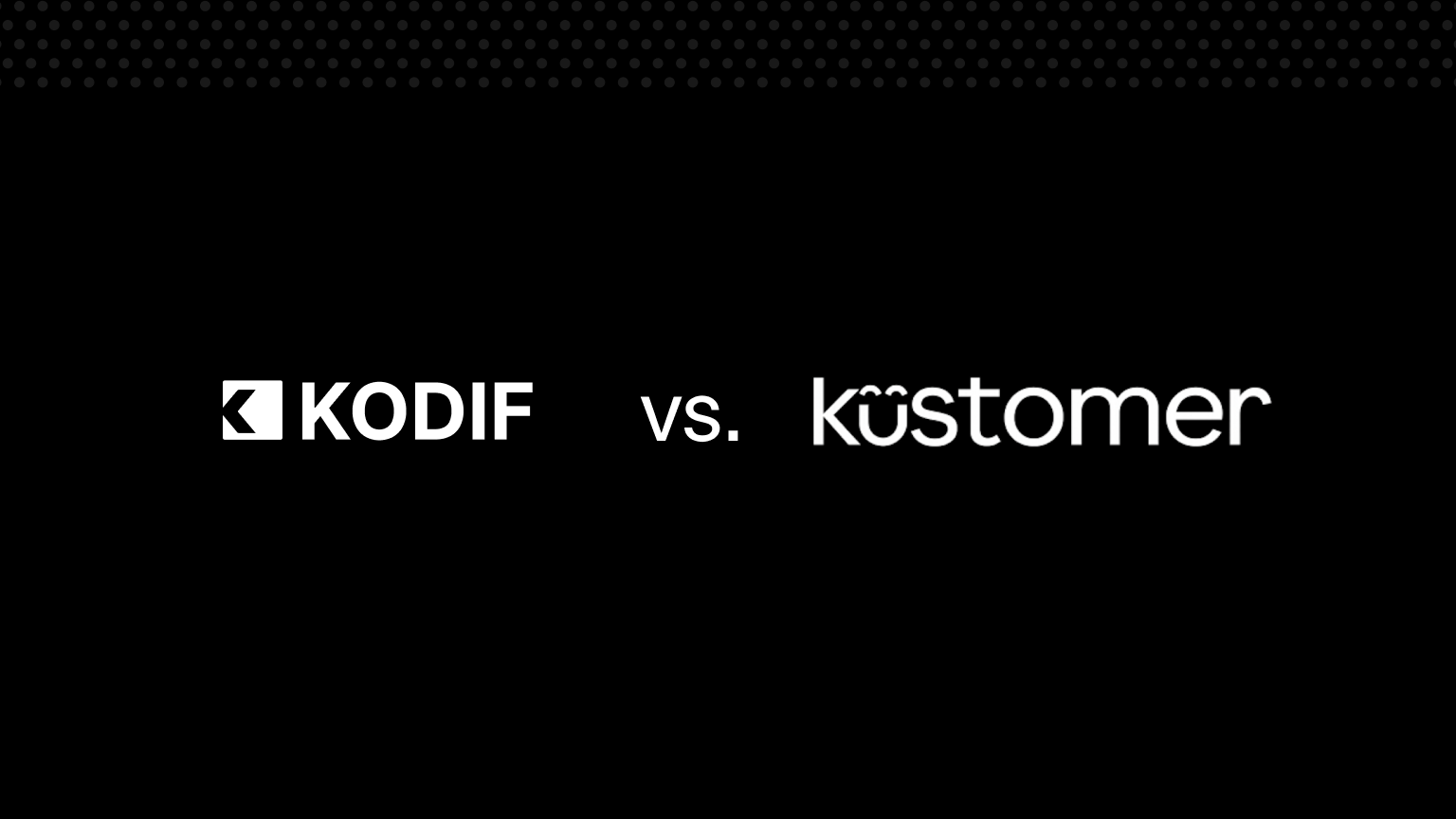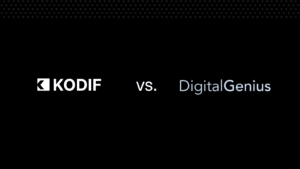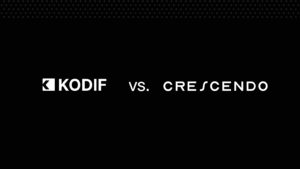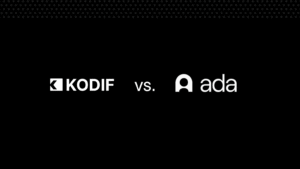When you’re evaluating CX technology, it’s easy to get lost in feature lists, acronyms, and promises of “transformation.”
To cut through the noise, we put KODIF side by side with Kustomer, one of the better-known platforms in the space.
Both aim to help teams deliver better customer experiences, but the way they go about it is very different.
At a glance
KODIF and Kustomer both aim to improve customer experience, but they take very different approaches. Kustomer is best known as an omnichannel CRM and case management tool, centralizing conversations across channels.
KODIF, on the other hand, is built for resolution-first automation, AI that doesn’t just deflect or triage, but actually does things like processing refunds, updating subscriptions, or handling returns.
Here’s how the two platforms compare side by side:
| KODIF | Kustomer | |
| Core focus | Resolution-first, full-journey automation | Omnichannel CRM + case management |
| Approach to AI | Agentic AI that takes real actions (refunds, returns, subscription edits) | AI/chatbots layered onto CRM for triage and deflection |
| Who owns automation | CX teams via no-code builder | Typically admins/ops; deeper changes often require technical help |
| Strengths | Fast setup, deep integrations, measurable outcomes, resolution > deflection | Centralized customer view, CRM functionality, omnichannel ticketing |
| Best for | Brands that want AI to do things, not just deflect | Teams looking for a unified CRM + ticketing hub |
The big differences
1. Resolution vs. deflection
- Kustomer often measures automation success through deflection: routing, FAQ suggestions, or containment rates. That trims queues but doesn’t necessarily fix problems.
- KODIF is designed for resolution-first automation. Instead of pointing to an article, the AI actually acts: refunding, pausing a subscription, rescheduling delivery, or escalating with full context.
Why it matters: customers feel taken care of, not brushed off, and CX leaders see retention, higher CSAT, and revenue impact.
2. Who controls automation
- Kustomer: Admins or ops teams typically configure automation. More advanced workflows often require technical help or custom dev.
- KODIF: Gives control to CX teams with a no-code builder. Policies change in the morning, automation is updated by lunch.
Why it matters: agility. CX leaders don’t have to wait on engineering to keep automations current.
3. Integrations and ecosystem
- Kustomer: Connects well with CRM, marketing, and support tools. But depth of integration can vary, especially for ecommerce workflows.
- KODIF: Built with ecommerce + subscription brands in mind. Deep integrations with Shopify, Recurly, Skio, Klaviyo, LoopReturns, ShipMonk, and 100+ more.
Why it matters: agentic commerce requires AI that can act in the systems your customers care about, not just surface info.
4. Outcomes and metrics
- Kustomer: Great for managing cases in one place and ensuring nothing falls through the cracks.
- KODIF: Optimized for measurable business outcomes: containment and resolution, retention saves, AOV growth, and customer insights captured automatically.
Bottom line
If your main challenge is managing omnichannel support within a centralized CRM, Kustomer is a strong choice.
But if you want automation that goes beyond deflection—automation that resolves customer problems, drives retention, and gives CX teams control—KODIF was built for that.
More interested in KODIF?
Here are some more details on KODIF and what we can do.
| Area | Details | Why it matters |
| Core positioning | No-code automation layer across CRMs and tool stack | Avoids re-platforming, faster value |
| Returns/refunds | Deep integrations (Shopify, Recharge/Loop, etc.), label/refund actions | Automates top D2C drivers |
| Builder experience | Natural language, transparent reasoning | Client ops can own iteration and AI is not black box |
| Agent Assist | CRM co-pilot and “side-pane” drafts, fallback via tags/views | Higher agent efficacy |
| Knowledge/policy | Skills library, versions, audit trails | Governance for 1 → 100 |
| APIs/Webhooks | Webhook node + attribute routing | Allows for proactive flows and integrations |
| Reporting | Light native, export events to data warehouse | BYO analytics with full observability |
| Compliance | SOC2, GDPR, CCPA, ISO 27001, HIPAA | Meets procurement needs and minimizes legal drag in acquisition |
Want to learn even more and see it all in action? Book a demo!









